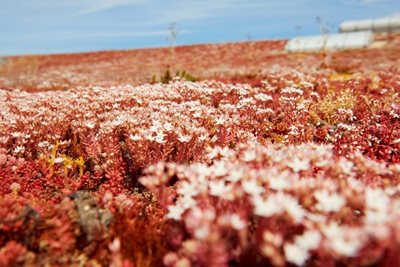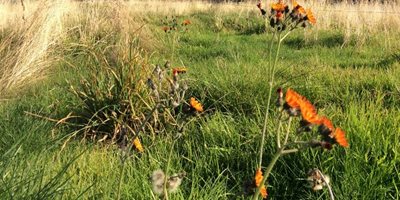Too Hot for Green Roofs
The recent exceptional weather has been a joy. Bright, sunny mornings and long warm evenings to sit out and enjoy the garden, or indeed what is left of it! Now our lawns are dried out and the shrubs are withered it is without a doubt that this summer’s heat wave is going to have long term effects on our vegetation, especially that of the flora on the many green roofs.
The problem has been compounded due to the now wide spread use of British Native species. Whilst we all want to see these plants growing and thriving, giving us little pockets of the natural world in our city centres, the truth is that most native species are pretty poor at surviving long, hot, dry conditions in thin, well drained growing medium (substrate).

Green roofs are designed to cope with the harsh conditions found on roofs, plants are typically chosen for their drought tolerance, and for their resistance to both strong winds and low temperatures. This is why Sedums have been so successful as a green roof plant, with their natural home high in the mountain, they can survive the poor thin soils, harsh winds, the extremely hot weather in the summer and cold in the winter. A low growing ground cover that needs little looking after, no other plants are better suited for green roofs.
However, although Sedums have many advantages; they are not British native. This singular detail has meant they have declined in popularity over the last 10 years. Many local authorities, especially in London, do not allow more than 30% of sedum in the green roof covering. This is beneficial as it has helped promote biodiversity and the use of British species on roofs, however. British species need much deeper growing mediums, which are also heavier and expensive. As always, specifications are cost driven, meaning that often the vegetation is installed on the bare minimum depth allowed (100mm substrate) with no irrigation or the provision to water in drought conditions.

In this recent heatwave, Biodiverse or Brown roofs installed with a poor irrigation system will have died right back, many will have set seed and died off completely and in some cases the substrate may even be exposed with a risk of erosion.
Green roofs are undeniably a great addition to our buildings, they are brilliant at reducing many of the problems in big cities such as eliminating diesel particulates from the air, reducing the Urban Heat Island effect, and slowing down and reducing water flow off flat roofs as part of a SuDS requirement to preventing flash flooding. Most of these facts have now become common knowledge, however green roofs are still one of the first things to be Value Engineered or to have their maintenance cut. This summer’s heatwave and prolonged period of dry weather will now undoubtedly show the limitations of this short sighted cost saving.
At Bauder we understand the necessity of getting the design right, as part of our service we can assist you with the design of your green roof project. The service is without charge and we work with you on a one-to-one basis to ensure the specification meets all your needs and that of the building. For technical advice in the design of your green roof project contact us via info@bauder.co.uk or 01473 261258.
Or, if you are in need of expertise in the maintenance and re-instatement of damaged green roofs contact our maintenance team via greenmaintenance@bauder.co.uk or call 0845 271 8801.